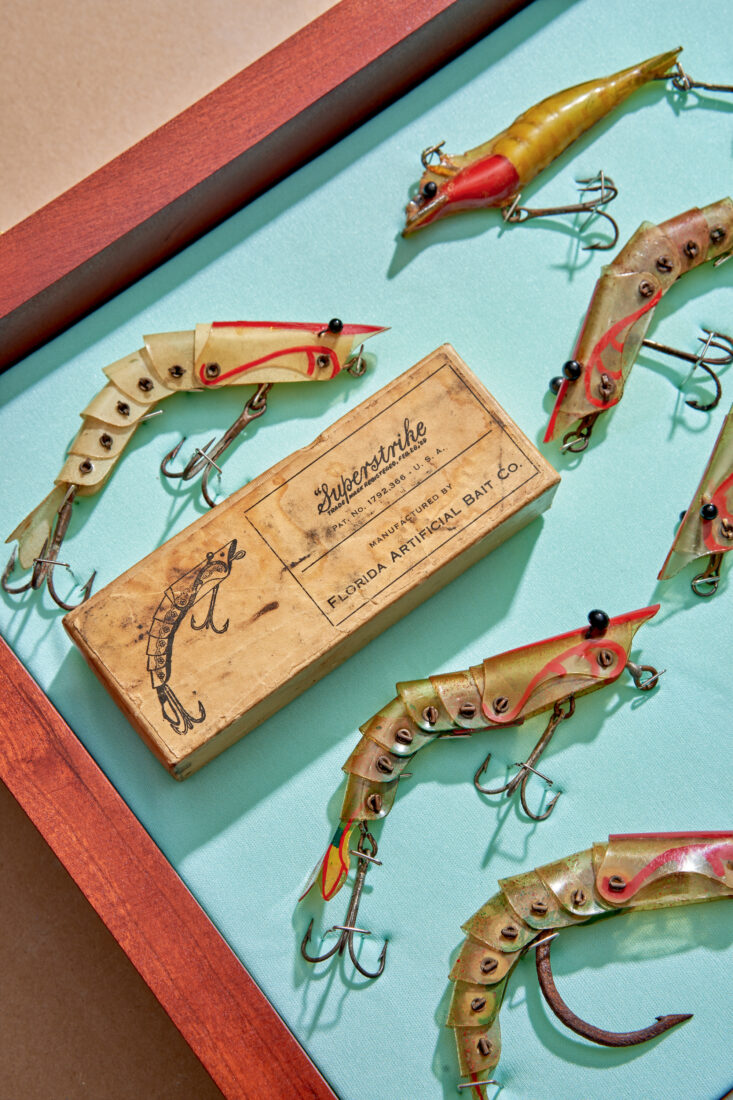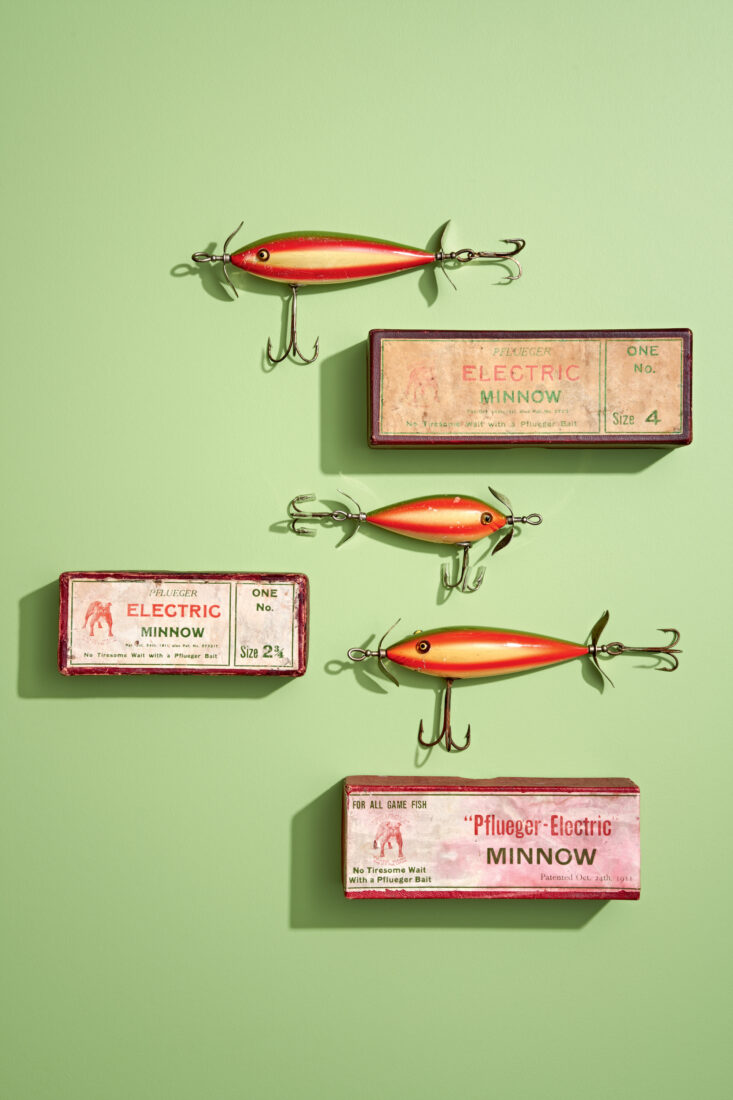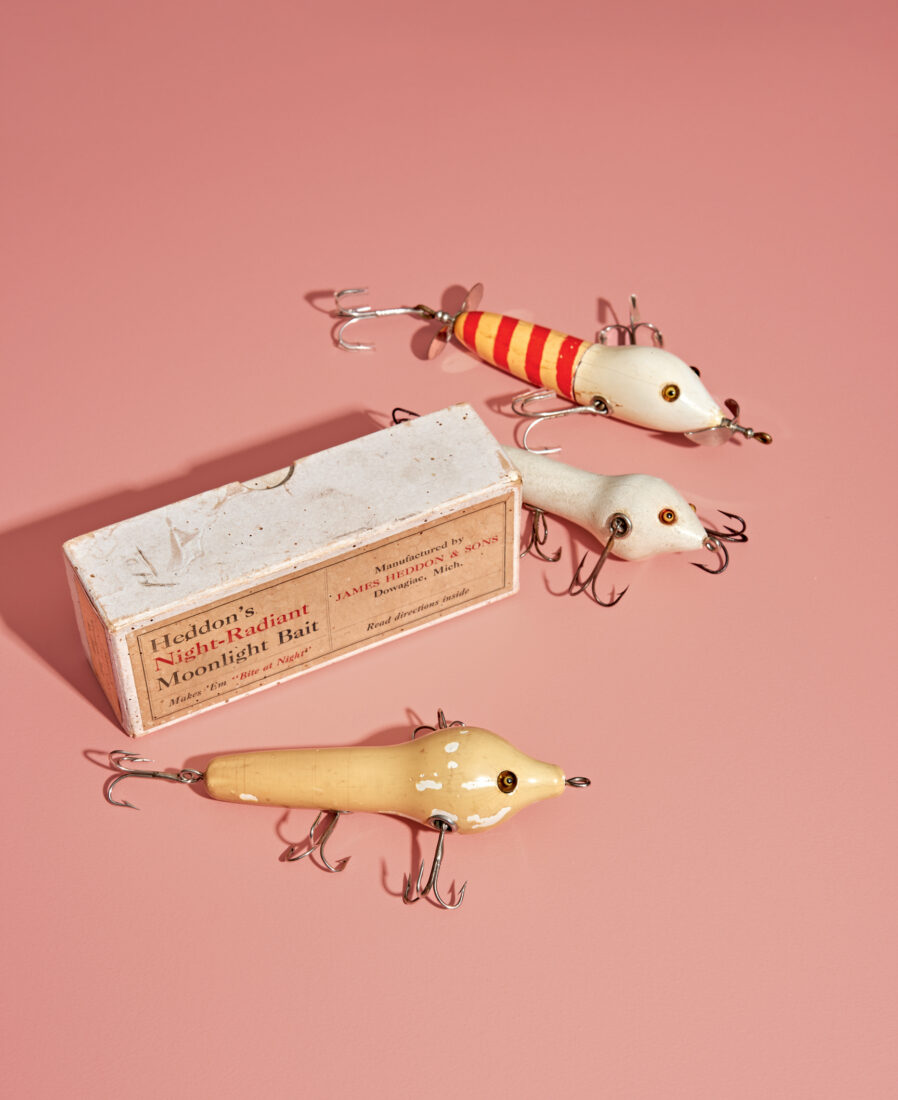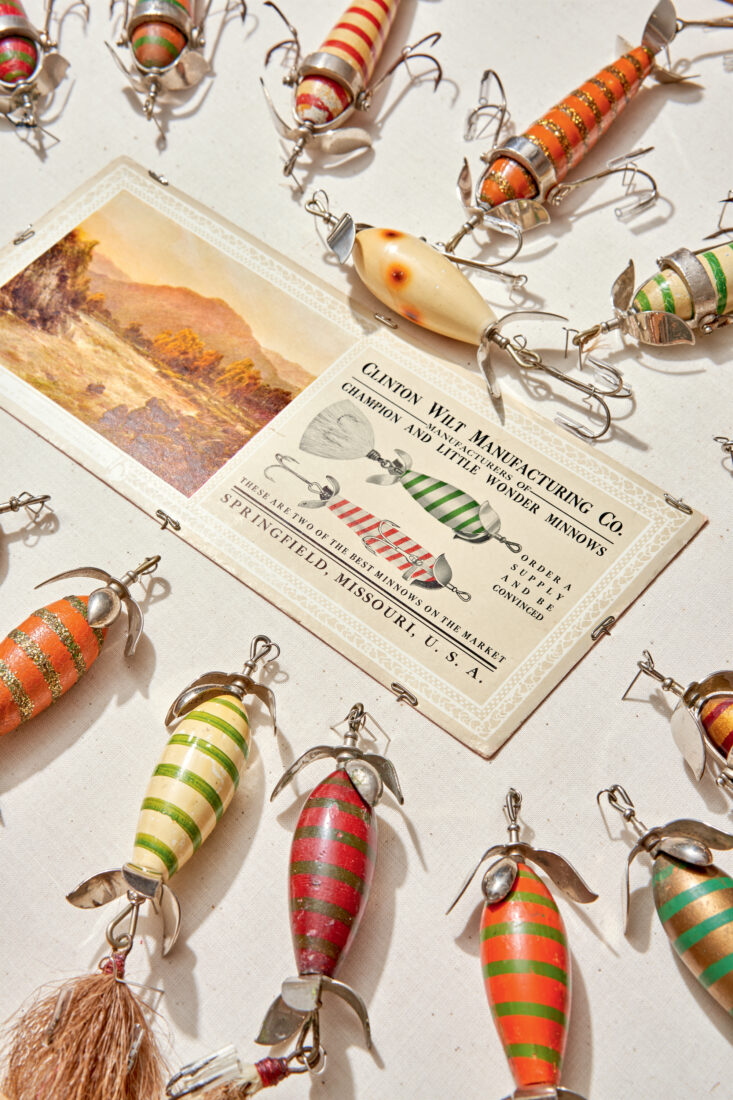Wayne Edens fell in love with fishing as a young boy, prowling the salt water and fresh water of his home state, Florida. The sport was “a joy,” recalls the seventy-three-year-old retired insurance executive, who lives in New Smyrna Beach. A way of forgetting any problems by concentrating on the present, on where he was fishing and what he was fishing for. That is, until one moment in 1988 that cast him ceaselessly into the past.
That day, he had taken a client bass fishing near Cocoa. As they left the water, the client invited Edens to come by his house so he could show him something: sixty or so antique lures. The client, as it turned out, had just lost his job and needed money, and he offered his entire collection to Edens for $400. “I thought my wife might kill me,” Edens says, “but he needed help, so I bought them,” and made space for them in the garage.

For a few years, he says, “I would go out and just look at the lures and move them around.” Then one day, a friend told him about a small auction house, Oliver’s (now Lang’s), that hosted biannual sales of antique fishing tackle. Edens got the catalogue. “It was beautiful,” he says. “An inch thick, with wonderful color prints of lures and descriptions of their history.” The hook was set.
Edens immersed himself in the world of antique lures, the most valuable of them made around the turn of the twentieth century. Some came from “cottage” makers. But Midwestern companies such as Heddon, Shakespeare, Pflueger, South Bend, and Creek Chub (which produced the lure that, in 1932, caught the world-record largemouth bass) manufactured most. He began buying them in earnest, from auctions and internet sites. He joined the National Fishing Lure Collectors Club, a 2,500-member group that hosts shows countrywide where enthusiasts meet to trade and buy. He got the lingo down pat (aficionados call antique lures “baits”). He met collectors who only sought out one brand or one color of lure, and some who were generalists, and he heard of the “closet” collectors, who never disclose what they possess. He learned that a lure with its original box and paper is called a “combo” and more highly valued and that, sometimes, a box can be worth more than the lure inside (since most boxes get tossed after purchase). And that some lures are extremely rare and valuable because they didn’t catch fish—like the Ackerman Minnow, made in two pieces that easily came apart—and thus weren’t produced in mass numbers, a bit like a misprinted baseball card.
But most of all, he learned that these lures evoked something within him. Something he loved.

In the late nineties, Edens befriended Bill Roberts, who owned perhaps the world’s finest collection of antique Heddon lures. “Bill took me under his wing,” Edens says. Over the years, Edens acquired most of Roberts’s lures and, soon enough, had amassed a collection of well over a thousand, one now considered among the most significant in the country, in terms of quality, with an estimated worth in excess of $2 million. Edens owns four extremely rare Night-Radiant Moonlight Heddon lures with their original boxes. He spent $13,500 at auction for a Heddon Musky Night-Radiant with a bulbous head and a red-and-white Charmer tail that once hung, along with other first editions, on the famous “lure board” at the Heddon factory in Dowagiac, Michigan. He has six Pflueger Trory Minnows, reputedly the first commercial artificial minnows. His most valuable: a Shakespeare Musky with five hooks and gold gills in its original box, one of eight known to exist, with an estimated worth of more than $50,000. (The record price for an antique lure: $101,200, fetched at auction in 2003 by a copper Giant Haskell Minnow.)

“Once you get a couple of these things, you start appreciating the history and the beauty and the engineering,” Edens says by way of explanation. “Each one is a little work of art that has its own story.” He displays some of them at Shiloh’s Steak & Seafood, a restaurant that a client owns just south in Titusville, and plans to convert a cottage behind his home into a quasi museum for the rest.

There are, he estimates, around four hundred serious collectors like him in the country. One, Bob Bulkley of Evansville, Indiana, along with his wife, Liz, has what is considered the world’s best collection, according to Joe Stagnitti, a lure collector, dealer, and appraiser. “But Wayne is right there,” Stagnitti says. Bulkley and Edens have what they describe as a friendly rivalry (they are fishing buddies). “Wayne has one devil of a collection,” Bulkley says. “He’s an aggressive collector, and, to top it all off, the sucker is likable.” The two dish out lighthearted barbs when one of them scores a quality lure. And they sometimes trade with each other, hewing to the adage that it’s not a good trade unless both sides hurt a little.
Edens denies coveting any “holy grail” lure, but he says he does have one regret. He once traded a rare aluminum three-belly-weight Heddon 150 to a collector in Arizona, who subsequently sold it to a Japanese collector. Since then, Edens has acquired the model in all colors from 1903 and 1904—except for one. “I know the guy who has it,” he says of the missing aluminum. “He refuses to sell or trade it, but I’ll keep after him.”








